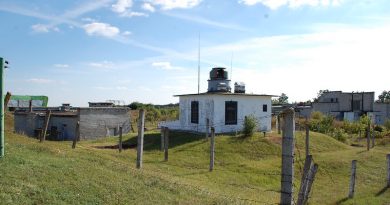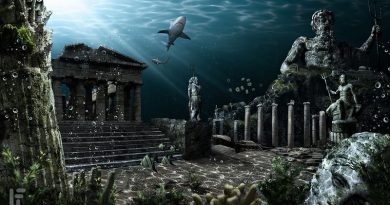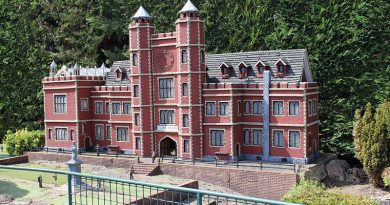Great Railway Stories of Norway
The Bergensbanen (Oslo – Bergen) & The Flam Railways
Norway is easily recognised as one of the most beautiful countries on earth. It is a place of great natural extremes, ranging from sunny fjord beaches to vastly inhospitable mountain terrain with arctic temperatures. Thinking Norway, one thinks of a bunch of warriors in battle uniforms, longboats gliding over Fjords and thousands of square kilometers of untouched natural wonderland. Today, Norway is next to Sweden the world’s only full-fledged welfare state, a picture-perfect democracy rich in natural resources, which German sociologist HM Enzensberger once called simultaneously an “ethnological museum and a future laboratory”. The population of just about five million people remains scattered across 400 000 square kilometers, with an astonishing coastline that is almost as long as Australia’s (25,760 km).
The topography and climate of the land always demanded the maximum from its residents in terms of perseverance, courage and patience. The sea raiders of the early medieval period, who we know as the Vikings, demonstrated a fascinating cunningness with a talent to shake off losses like water of a ducks back. Originally, these tribes were full-time fishermen and farmers who spent much of the year at home busy with production of food through farming, fishing and collecting. The majority of them lived around the Western shores, along the fjords, and very few tribes ever conquered their own pristine hinterland, which remained untouched for many centuries.
The image of a peaceful Nordic hunter-gatherer tribe is quickly shattered when looking at the annual summer raids, when the sun was high in the sky and their local chiefs would drum their tribe together for war and conquest. Literally born with two feet in the water, the Vikings were experts in water transportation; their lightweight longboats were designed for speed and easy navigation in shallow waters. They shouldered themonce they reached foreign shores and made their way to villages and rich ecclesiastical sites. The latter were their favourites for raids; sacking a monastery was like winning the jackpot – gold, jewelry, cattle, wine and high-quality textiles galore. Occasionally, they stole expensive manuscripts only to stoically sell or trade them back to their original owners against more imported fancy goods.
With ongoing conflict and infighting between Danish and Norwegian Vikings, more and more Vikings ended up settling on foreign shores as craftsmen, traders and farmers. The Viking Age lasted from 800-1100 AD and after its decline a quieter period descended on Scandinavia. Norway remained under Danish rule for more than 400 years and achieved a peaceful secession from Sweden in 1905 and thus has been an independent nation only for little more than a hundred years. Europe’s industrialization reached Scandinavia in the second half of the 19th century, and its mineral trade made the country increasingly prosperous and triggered housing, road and railway construction.
In the 1880s, the government had decided to build a railway between its capital Oslo and the Western city and port of Bergen. Its construction took nearly 30 years, with 15,000 workers working away no less than 2.5 million worker days. The project swallowed an full national annual governmental budget, but once completed in 1909, its workers had demonstrated the same perseverance, courage and willingness to take risks that their Viking forefathers had shown when conquering Northern Europe and sailing all the way to Canada’s shore in 1000 AD.
The Oslo-Bergen line, or Bergensbanen, is the highest mainline railway in Northern Europe. Crossing the Hardangervidda plateau at 1,237 meters above sea level, it connects the two most important commercial centers of the country: Oslo and Bergen. The steepest climb begins near the winter resort of Geilo, passing the jaw-dropping Hardangerjokulen glacier, before reaching Myrdal and then Bergen. The Oslo-Bergen railway linemay be a normal commute for many Norwegians, who will happily snore away while passing by spectacular glaciers, mountains, twisting tunnels, and inhabited vast landscapes; for most travellers however, this railway trip is the quintessential trip through Norway.
The construction of the Bergen line came in conjunctionwith the expansion of railway across continentalEurope. Yet the government faced several setbacks, financially and otherwise, when planning and executing the line, and it took six years alone to properly survey the landscape. Before a single track could be laid, roads had to be constructed to shuttle supplies to workers who were based up on the mountains in complete isolation. The construction was exceptionally challenging in a very hostile climate – tons of snow in the winter and temperatures dropping far below freezing. In the end, 113 tunnels totaling 28 kilometers were built, and on 10 June 1908 the first scheduled train rolled from Oslo West station to Bergen. In November of the same year, King Haakon VII opened the line officially, proudly honouring engineers and workers by stating that it was an engineering masterpiece of their generation.
After the Bergen line was opened in 1909, the only thing missing was a branch line to the Sognefjorden – the longest and deepest Fjord in Europe. It took nearly 20 years for that vision to become a reality. The Flam Railway construction was once again delayed because of poor and narrow roads, which first had to be widened and opened to transport material to complete the 20 km side branch, which boasts no less than 10 stations, 20 tunnels and one bridge. A meager 120 men workforce was employed, occasionally rising up to 220, but dwindling during the financial recession of the 1920s.
Since the Flamsdalen area is known for enormous snowslides and avalanches, the line had to be built crossing the river and the valley floor about three times to avoid the most dangerous areas. The workers dug 18 out of the 20 hairpin tunnels by hand – a length totaling 5692.4 meters – proving their stoic, undaunted Scandinavian mentality when facing fierce topographical odds. Every meter cost them about a month of work. Surprisingly, just like with the Bergen line construction, only few fatalities occurred.
On 1 August 1940, in the midst of World War II, the first scheduled train ran from Myrdal, where the side branch connects with the Bergen line, to Flam. There was no royal fanfare but a plain freight car made its way filled with cargo. On 10 February 1941, the line opened up for passenger traffic, and was first served by steam-powered locomotives before electrified locomotives took over in 1944. It is one of the world’s steepest railways on normal gauge. Today, the Flam Railway is a hugely popular train journey for international visitors, with superb panorama views along the way, before reaching the tiny village of Flam with a population of only 500 people. It is situated at the innermost part of the Aurlandsfjord, a tributary of the 204 km long and up to 1308 metres deep Sognefjord of which locals say that “a mermaid could swim all the way to China”.
Norway’s thirst for conquest must have been quenched with the decline of their Viking forefathers, and it fought hard to protect its neutrality, freedom and independence in the 1930s. It negotiated trade treaties with both the UK and Germany, yet it became increasingly clear that both countries had a vital interest in denying the other access. Germany invaded Norway in another Blitzkrieg in April 1940, a move, which secured Nazi Germany access to continued supply of iron-ore from Sweden, ice-free harbours in the north of Norway for maritime warfare in the North Atlantic and pre-empted a British-French invasion.
The Germans invaded Norway by sea and by air and conquered the capital through the Oslo fjord. Norway surrendered relatively quickly, not prepared for a strike like that on its own shores and returned to its independence only after Germany’s capitulation in May 1945. The existing railway lines throughout Norway were put immediately under German control and Germany went so far as to establish a top-secret research base in Finse, along the Oslo-Bergen line just before Myrdal, where they tested the qualities of different engines and fuel types in high-altitude arctic climate. Consequently, the British Air Force bombed Finse thoroughly in 1943.
The Bergensbanen and the Flam Railway offers the best of Norwegian train journeys in a nutshell, from engineering superlatives in inhospitable terrain to the magic of wild and beautiful nature, with surprising historical events set against the backdrop of the Norwegian landscape.




